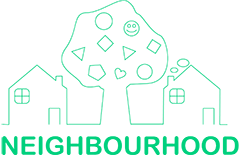Trust is fundamental to Neighbourhood’s brand and technology. In this post I will pick up on an important finding from our survey, which highlighted the crucial importance of known connections to the take-up of Neighbourhood, by new users. And connect this to the notion of local trust, and trust paths, in a network.
Trust is an evolving and contested area in relation to social networks. However broadly, in a social network, it is crucial to provide a basis on which to help users start to trust, build up, and maintain trust with others.
In this journal article, Jennifer Gobeck (via David Millard) uses the example of FilmTrust, to show how the amount a user A should trust or assign trust to the rating of a film by user B, may be a function of how locally connected they are to that user B. That is to say, another user’s rating of a film, will influence the recommendation of that film to user A, depending on how locally connected they are.
- Please see: Golbeck. Filmtrust: movie recommendations from semantic web-based social networks. Consumer Communications and Networking Conference (2006) pp. 282-268 (PDF).
Linkedin also uses these principles in its function which allows users to message people who are connected to them, along a local trust path of first, second and third degree connections.
This mechanism, to build trust along paths, is highly relevant to Neighbourhood, and would be a very useful feature for our backend technology, to calculate recommended interests and activities to users, based on their local trust paths. The transparency of this will also be very important (showing our users these trust paths and allowing them to see and control them). Also bearing in mind the pseudonymous nature of our user identities, and the power our users have to control who sees their real names and personal information.

